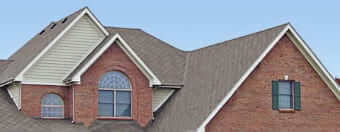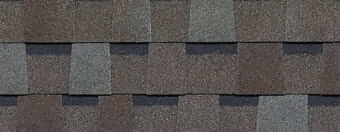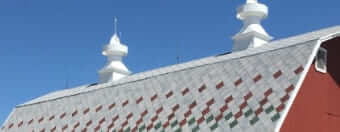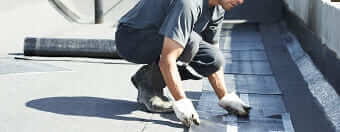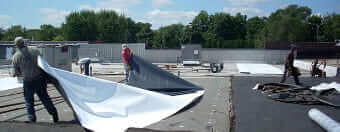from Sherriff Goslin Roofing
Choose your view:
Why Your Roof Decking Matters More Than You Think
Your roof might look great from the street, but what’s holding it up could be a different story. Beneath those shingles is the real MVP: your roof decking. It’s the solid layer that supports everything above it, and when it starts to weaken, the rest of your roofing system follows.
Most homeowners don’t think about their roof’s base layer until there’s a problem, but understanding what’s underneath can help you catch issues early and avoid major repairs. In this blog, we’re diving into what roof decking does, the materials it’s made from, and why a strong foundation is the key to a roof that lasts.
What Is Roof Decking & Why Does It Matter?
Roof decking is the layer of wood or composite material between your roof’s structural framework and the shingles. It's not something most homeowners see, but it's one of the most critical components of a roofing system. This base layer creates a flat, stable surface that holds your roofing materials in place and provides the strength to handle daily wear and tear.
Without solid decking, even the best shingles won’t perform well. Weak or damaged decking can lead to leaks, sagging, and premature roof failure. That’s why understanding what it does and how to keep it in good shape is key to protecting your home.
What Does Roof Decking Actually Do in a Roofing System?
Think of roof decking as the foundation your shingles rely on. It anchors every nail, absorbs impacts from weather, and helps distribute weight evenly across the roof. It also creates a continuous surface, giving your underlayment and shingles the support they need to do their job.
When roof decking starts to deteriorate, everything above it becomes vulnerable. You might see uneven shingles, water intrusion, or even structural sagging. That’s why strong, properly installed decking is essential for keeping your roofing system intact and your home protected.
Key Functions of Roof Decking at a Glance
- Structural Support: Keeps roofing materials stable and properly aligned
- Load Distribution: Spreads weight from snow, wind, and foot traffic across the framing
- Moisture Barrier Base: Serves as the foundation for underlayment that blocks water
- Fastener Anchor: Holds nails and shingles securely in place
- Surface Continuity: Provides a smooth, solid base for full shingle coverage
What Shapes the Strength of Your Roof Decking
Not all roof decking is created equal. The strength of this critical layer depends on the materials used, the thickness of the boards, and how well they’re installed.
Over time, weather exposure, moisture, and even attic ventilation can also affect its performance. That’s why understanding what your decking is made of is the first step in keeping your roof strong and stable.
Different homes and different regions call for different types of decking. Whether it’s plywood, OSB, or older board decking, each has its own strengths, drawbacks, and ideal uses. Let’s take a closer look at what’s under your shingles.
Roof Decking Materials: What’s Under Your Shingles
Your roof decking material plays a major role in how long your roofing system lasts. Most modern homes use either plywood or OSB, while older homes may still have plank decking. Each material handles weight, moisture, and fasteners a bit differently, and those differences matter when it comes to durability and performance.
Choosing the right type of decking and knowing what you already have can help you plan for repairs, replacements, or upgrades. The next sections break down each material, so you can understand how it supports your roof and when it may need attention.
Plywood Roof Deck
Plywood is one of the most commonly used materials for roof decking, especially in residential homes. Made by layering thin wood veneers, it offers strong load support and good resistance to warping. Its layered design helps it securely hold fasteners, making it ideal for shingle installation.
Durability & Lifespan
- Typically lasts 20–30 years when properly installed
- Holds up well under changing weather conditions
- Less prone to swelling or buckling than OSB
Pros & Cons
- Pros: Strong, moisture-resistant, easy to work with
- Cons: Heavier and more expensive than OSB
- Neutral: Requires adequate ventilation to prevent long-term rot
Best Uses
- Ideal for residential homes in varied climates
- Works well with asphalt shingles and other common roofing materials
- Preferred when durability is prioritized over cost savings
OSB Roof Decking
Oriented strand board (OSB) is a popular alternative to plywood due to its lower cost and wide availability. It’s made from compressed wood strands and resins, forming a dense and uniform panel. While not as moisture-resistant as plywood, it performs well in many standard roofing applications.
Durability & Lifespan
- Can last 20–25 years under proper conditions
- Vulnerable to moisture absorption if edges are exposed
- Performs reliably when kept dry and well-sealed
Pros & Cons
- Pros: Cost-effective, consistent in size and quality, widely used
- Cons: Less resistant to swelling and water damage
- Neutral: Heavier than plywood, but structurally solid
Best Uses
- Common in new construction and budget-friendly projects
- Suitable for dry or controlled environments
- Works well when paired with a high-quality underlayment
Plank or Board Decking
Plank or board decking was standard in older homes before plywood and OSB became the norm. It typically consists of 1x6 or 1x8 boards nailed directly across the rafters. While solid, these boards can shift or create uneven surfaces over time, especially if the home has settled or experienced structural movement.
Durability & Lifespan
- Can last decades if dry and structurally supported
- More prone to warping or separation with age
- Requires close inspection during any reroofing project
Pros & Cons
- Pros: Durable, breathable, and easy to replace in sections
- Cons: Gaps may develop between boards; not ideal for modern shingles
- Neutral: Often replaced or overlaid with sheathing during reroofing
Best Uses
- Still found in historic homes and older buildings
- May require upgrades when installing new roofing systems
- Suitable when preservation or restoration is a priority
How Do You Maintain Strong Roof Decking?
Maintaining roof decking comes down to preventing moisture damage and catching small problems early.
A few simple habits can go a long way in keeping it solid for years:
- Schedule Regular Inspections: Have a roofing professional check your roof at least once a year, especially after storms.
- Fix Leaks Quickly: Even minor drips can spread water into the decking and weaken it over time.
- Keep Gutters Clear: Clogged gutters allow water to back up onto the roof, increasing the risk of rot.
- Replace Damaged Shingles Promptly: Missing or broken shingles leave decking exposed to the elements.
- Watch for Indoor Signs: Ceiling stains or musty odors can signal hidden decking issues.
Why this matters: Proactive maintenance keeps your roof decking strong, saving you from costly structural repairs down the road.
Why Regular Roof Decking Checks Are Worth It
It’s easy to overlook what’s under your shingles until there’s a problem. Regular roof decking checks are one of the simplest ways to protect your home from water damage, sagging, and unexpected repair costs. Catching issues early can save your roof from premature failure and help your shingles perform the way they should.
A professional inspection doesn’t just look at the surface. It evaluates the structural base beneath, giving you a clearer picture of your roof’s overall condition. Even if everything looks fine from the outside, hidden decking damage can develop quietly over time.
What Happens If I Ignore Minor Decking Damage?
Minor damage doesn’t stay minor for long. When soft spots, gaps, or moisture buildup are left unchecked, they can quickly lead to larger structural problems. Water seeping through a small crack in the decking can spread to rafters, insulation, and drywall before it’s visible.
Ignoring these early warning signs often means paying more later, not just for roof repairs but also for interior fixes. Staying proactive with inspections helps prevent these issues before they spiral.
Risks of Delaying Roof Decking Repairs
- Worsening Moisture Damage: Small leaks often lead to widespread rot and mold
- Higher Repair Costs: Waiting too long can require partial or complete decking replacement
- Shortened Roof Life: Damaged decking weakens shingle performance and lifespan
- Compromised Structural Support: Sagging areas may affect attic framing and ceilings
- Reduced Energy Efficiency: Gaps or water-damaged insulation can raise utility bills
Spotting Roof Decking Problems Before They Get Worse
Roof decking may be hidden under your shingles, but it’s the backbone of your entire roofing system. If it starts to fail, small issues can quickly turn into expensive repairs.
Signs your roof decking might be in trouble:
- Sagging Spots: If the roof looks uneven or feels soft when walked on, the decking could be weak.
- Indoor Water Stains: Brown spots on ceilings or walls often mean moisture has seeped through.
- Curling or Wavy Shingles: This can be a clue that the plywood beneath isn’t holding strong.
- Persistent Leaks: Even a tiny drip might point to a bigger problem below the surface.
Why this matters: Catching these red flags early helps you avoid mold, structural damage, and a roof that wears out before its time.
How Regular Inspections Save Money
Regular roof inspections help you save money by catching minor decking problems before they become expensive repairs. A quick fix today is always cheaper than a primary replacement later.
Ways regular inspections save money:
- Early Repairs: Replacing a few damaged boards costs less than rebuilding large sections of decking.
- Leak Prevention: Stopping water intrusion protects ceilings, walls, and insulation from costly damage.
- Longer Roof Life: Well-maintained decking helps shingles and underlayment last longer.
- Avoiding Emergencies: Inspections reduce the risk of sudden, high-cost roofing failures.
Why this matters: Regular roof checks from a trusted local roofing company are a simple, affordable investment that protects your home and your wallet.
Schedule a Roof Decking Inspection to Protect Your Roofing Foundation
Unsure if your roof decking is holding up? A professional inspection can spot early signs of damage before they compromise your roof’s support structure.
At Sherriff Goslin Roofing, we evaluate your plywood roof deck for soft spots, sagging, or gaps that may weaken your roofing foundation. You’ll get straightforward recommendations and solutions that match your roof’s current condition.
Let’s help you extend the life of your shingles, contact us to schedule your roof decking inspection today.

